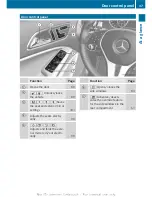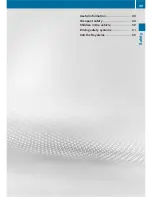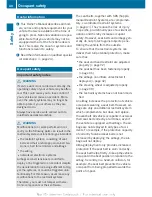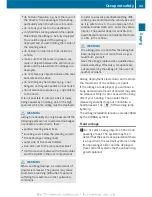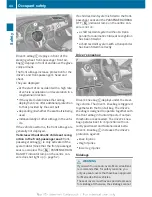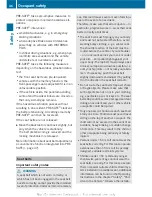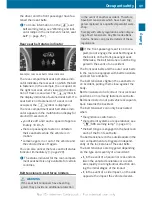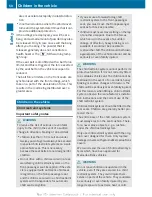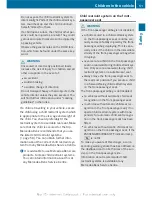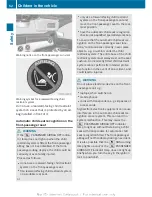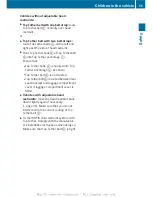
SRS (Supplemental Restraint System)
Introduction
Supplemental Restraint System (SRS) with:
R
The
6
SRS warning lamp
R
Airbags
R
Airbag control unit (with crash sensors)
R
Belt tensioners for the front seat belts and
the outer seat belts in the rear
R
Seat belt force limiters for the front seat
belts and the outer seat belts in the rear
SRS reduces the risk of occupants coming
into contact with parts of the vehicle's interior
in the event of an accident. It can also reduce
the forces to which occupants are subjected
during an accident.
SRS warning lamp
G
WARNING
If SRS is malfunctioning, individual systems
may be triggered unintentionally or might not
be triggered in the event of an accident with
a high rate of vehicle deceleration.
A malfunction has occurred if:
R
the
6
SRS warning lamp does not light
up when the ignition is switched on.
R
the engine is running and the
6
SRS
warning lamp does not go out after a few
seconds.
R
the engine is running and the
6
SRS
warning lamp lights up again.
In this case, have SRS checked immediately
at a qualified specialist workshop.
The
6
SRS warning lamp in the instrument
cluster lights up when the ignition is switched
on. It goes out no later than a few seconds
after the engine is started.
SRS functions are checked regularly when the
ignition is switched on or the engine is run-
ning. Therefore, malfunctions can be detec-
ted in good time.
Triggering of belt tensioners and air-
bags
During the first stage of a collision, the airbag
control unit evaluates important physical
data relating to vehicle deceleration or accel-
eration, such as:
R
duration
R
direction
R
magnitude
Based on the evaluation of this data, the air-
bag control unit pre-emptively triggers the
belt tensioners in the first stage.
If there is an even higher rate of vehicle decel-
eration or acceleration in a longitudinal direc-
tion, the front airbags are also deployed.
Your vehicle has adaptive, two-stage front air-
bags. The airbag control unit evaluates vehi-
cle deceleration or acceleration in the event
of a collision. In the first deployment stage,
the front airbag is filled with enough propel-
lant gas to reduce the risk of injuries. The
front airbag is fully deployed if a second
deployment threshold is reached within a few
milliseconds.
The belt tensioner and airbag triggering
thresholds are variable and are adapted to the
detected rate of deceleration or acceleration
of the vehicle. This process is pre-emptive in
nature. The triggering process must take
place in good time at the start of the collision.
The rate of vehicle deceleration or accelera-
tion and the direction of the force are essen-
tially determined by:
R
the distribution of forces during the colli-
sion
R
the collision angle
R
the deformation characteristics of the vehi-
cle
R
the characteristics of the object with which
the vehicle has collided
Factors which can only be seen and measured
after a collision has occurred do not play a
decisive role in the deployment of an airbag,
Occupant safety
41
Safety
Z
Summary of Contents for 2012 A-Class
Page 1: ...A Class Owner s Manual Nur für internen Gebrauch For internal use only ...
Page 4: ......
Page 28: ...26 ...
Page 40: ...38 ...
Page 74: ...72 ...
Page 92: ...90 ...
Page 284: ...282 ...
Page 285: ...Useful information 284 Engine compartment 284 Service 289 Care 290 283 Maintenance and care ...
Page 336: ...334 ...
Page 353: ...351 ...
Page 354: ...352 ...











